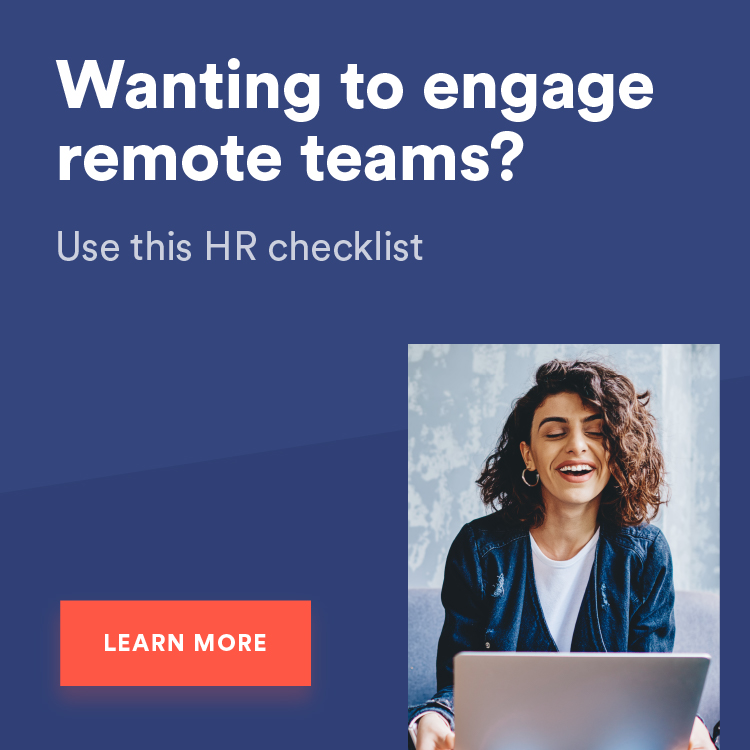Invest in revising your employee onboarding processes to match your business’s current reality.

Did you ever think you’d be running a small business in the middle of a global pandemic and an economic crisis? Probably not.
There have been a lot of curveballs small business owners have dealt with this year. The silver lining, though, is all of the learning that has come from this wild experience.
Chances are your business today looks very different than it did a year ago and. As a result, your whole employee onboarding process is different as well — especially with all of the remote work people are doing and the sanitization processes required for in-person offices and businesses.
It might seem like just another thing to add to your mountain of a to-do list, but the time you’ll invest in revising your employee onboarding to match your business’s current reality will save you in the long run. 20% of turnover occurs within the first 45 days and we all know that there are big costs associated with recruiting and hiring.
Here’s what to consider when updating your employee onboarding processes for 2021.
Create processes for remote interviewing
As more and more companies come out with declarations that they plan to work remotely through summer 2021, that means at the very least an immediate future of remote processes. That includes interviewing and onboarding.
Fewer than 14% of hiring managers report having conducted remote interviews before COVID-19.
Fewer than 14% of hiring managers report having conducted remote interviews before COVID-19. Since remote interviews can be new for both candidates and interviewers, it’s important to set process expectations upfront and do what you can to address issues before they happen. Let both candidates and interviewers know that the processes will be remote (at least for now) with ample time to prepare. Remember, not everyone has excellent internet at home. Find ways (chiefly by using adequate software solutions) to address the central concerns that many interviews have around elements like response time limitations, privacy issues, and potential fraud.
You’ll want to plan for remote onboarding, too
When it comes to onboarding, there are opportunities for new hires to fall through all the cracks that joining a distributed, remote team brings. Consider formalizing processes like sending out team or company-wide emails on people’s first days so that they feel welcome and everyone knows that there’s a new coworker to get to know. Make sure that new hires are either adequately set up to participate in remote onboarding or dedicate their first day to making sure that this is the case.
Consider formalizing processes like sending out team or company-wide emails on people’s first days so that they feel welcome and everyone knows that there’s a new coworker to get to know.
On the operational side, is there a way for you to turn previously in-person onboarding processes into digital assets that you can simply send out and use over and over again? If you have the resources, you can create a quality video that can replace some of the human interactions from “the before times.” Why not do your best to replicate that human touch?
Cover all the new COVID-related changes — immediate and ongoing
You’ll want to be sure to cover any COVID-related processes that your new hires are expected to adhere to.
It’s easier to create information and introduce it into your onboarding process and simply take it out later, than it is to leave out something important. Omitting important information can set your employee up for failure as well as make extra work for trainers and peers — especially when it comes to super important elements like sanitation mandates. From disclosing contact with someone who was COVID-positive to following CDC guidelines to a T depending on what your small business entails, you’ll want to be sure to cover any COVID-related processes that your new hires are expected to adhere to.
Make sure your handbook matches your onboarding
If you have an employee handbook (and you should!), you’ll want to make sure it’s updated accordingly. Most employees receive their handbook as part of their onboarding process, and many businesses require an employee to sign it as a way to confirm they have read and understood the company’s policies.
While many handbooks were in hardcopy form before, this is a chance to digitize your handbook — which makes it easier to change as well. This can come in especially handy when it comes to the COVID-related information that you’ll probably have to be adding in for 2021 that (hopefully) won’t have to be included forever. Plus, any inconsistencies between an employee handbook and the information you give through onboarding aren’t great — they’re just confusing for new hires and for hiring managers, too. A digital version makes correcting any disconnects super easy!
Don’t overdo virtual meetings
It can be tempting to just host a day-long Zoom call with new hires since videoconferencing is how many professional interactions are taking place these days. But that can be exhausting for new hires and hiring managers alike. Being “on” (literally and figuratively) can be a tiring experience. Is there anything you can send in a document? Any videos they can watch, or related reading you can point them to? Rather than scheduling a call for something like reading through the employee handbook, let them read it on their own and reserve video time for Q&As to minimize video conference time.
That said, some things either have to be (or are best) done through a video call. If that’s frequently the case for your small business, consider breaking up your onboarding processing and conducting it over the course of a couple of days instead of jamming it into one. And remember to always carve out time for breaks.







